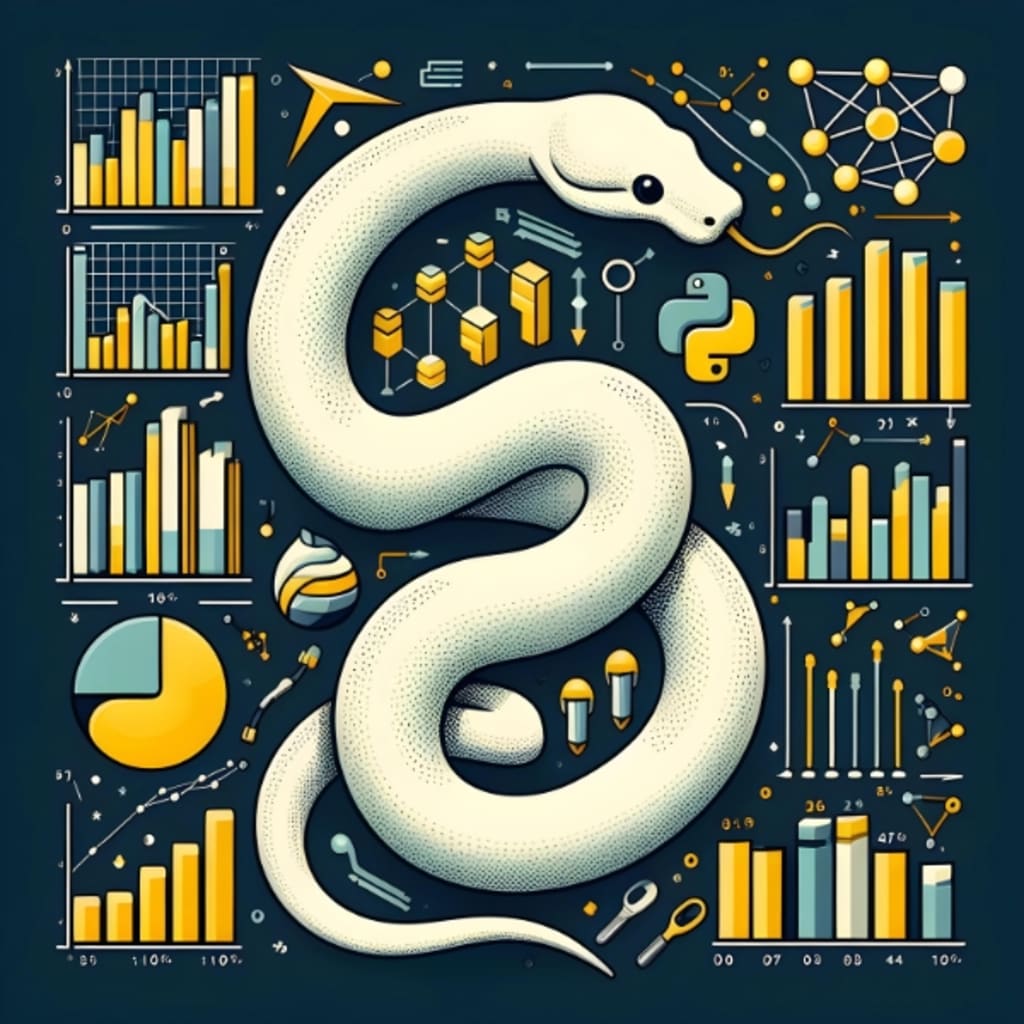Python for Data Science: The Power of Python in Data Exploration and Analysis
Explore the dynamic world of Python for Data Science and discover its pivotal role in extracting insights from data. Dive into Python basics, data manipulation, visualization, machine learning, and more!

In the realm of data science, Python emerges as a formidable force, empowering analysts and data scientists to unravel complex datasets with ease. Python's versatility, coupled with its rich ecosystem of libraries, makes it the go-to language for data exploration, analysis, and modeling.
Python Basics
Python serves as the cornerstone of data science endeavors, offering a plethora of tools and functionalities. Understanding Python basics is essential for embarking on the data science journey. From variables and data types to control flow statements and functions, mastering Python fundamentals lays a robust foundation for data manipulation and analysis.
Data Manipulation
Data manipulation lies at the heart of every data science project. With libraries like NumPy and Pandas, Python facilitates seamless data manipulation, enabling tasks such as data cleaning, preprocessing, and transformation. Harnessing the power of these libraries streamlines the data preparation phase, setting the stage for insightful analysis.
Data Visualization
Visualization plays a pivotal role in data exploration and communication. Python boasts robust visualization libraries such as Matplotlib and Seaborn, empowering data scientists to create compelling visualizations that convey insights effectively. Whether it's plotting histograms, scatter plots, or heat maps, Python's visualization capabilities are boundless.
Machine Learning with Python
Machine learning, a cornerstone of data science, finds a perfect companion in Python. With libraries like Scikit-Learn, Python simplifies the implementation of machine learning algorithms, both supervised and unsupervised. From classification and regression to clustering and dimensionality reduction, Python offers a comprehensive suite of tools for tackling diverse machine-learning tasks.
Deep Learning with Python
In the era of artificial intelligence, deep learning has emerged as a game-changer in data science. Python frameworks like TensorFlow and Keras provide intuitive interfaces for building and training neural networks. Leveraging the power of deep learning, data scientists can tackle complex tasks such as image recognition, natural language processing, and more.
Natural Language Processing
Natural Language Processing (NLP) empowers machines to understand and interpret human language. Python libraries such as NLTK and SpaCy offer robust tools for text processing, sentiment analysis, named entity recognition, and other NLP tasks. With Python, unlocking insights from unstructured text data becomes seamless and efficient.
Big Data Analytics
In the era of big data, traditional data processing techniques fall short in handling massive datasets. Python comes to the rescue with PySpark, a powerful framework for distributed data processing. By leveraging PySpark's parallel computing capabilities, data scientists can analyze vast amounts of data efficiently, unlocking valuable insights at scale.
Model Evaluation and Deployment
Building machine learning models is only half the battle; evaluating their performance and deploying them into production are equally crucial steps. Python offers robust techniques for model evaluation, including cross-validation methods. Furthermore, frameworks like Flask facilitate seamless model deployment, allowing data scientists to deliver their insights to end-users effectively.
Advanced Topics
Beyond the fundamentals lie a plethora of advanced topics waiting to be explored. From time series analysis to reinforcement learning, Python offers tools and frameworks for delving into niche domains within data science. By mastering these advanced topics, data scientists can unlock new realms of possibility and innovation.
Career Opportunities
The burgeoning field of data science presents a myriad of career opportunities for aspiring professionals. From data analysts and machine learning engineers to data scientists and AI researchers, the demand for skilled practitioners is on the rise. Acquiring proficiency in Python for data science opens doors to a wide array of rewarding and lucrative career paths.
Resources and Tools
Starting on the journey of Python for data science requires access to comprehensive resources and tools. Fortunately, the online landscape is replete with tutorials, courses, and documentation to aid learners at every stage of their journey. Additionally, exploring popular libraries and frameworks equips data scientists with the necessary tools to tackle real-world challenges effectively.
Conclusion
Python stands tall as the cornerstone of modern data science, empowering practitioners to extract insights, build models, and drive innovation. With its rich ecosystem of libraries, intuitive syntax, and vibrant community, Python continues to revolutionize the field of data science, paving the way for groundbreaking discoveries and advancements.
About the Creator
James Moody
Follow me and you will find great benefit from the stories that enrich your professional life. I will transfer to you my accumulated practical and life experiences.
Enjoyed the story? Support the Creator.
Subscribe for free to receive all their stories in your feed. You could also pledge your support or give them a one-off tip, letting them know you appreciate their work.






Comments
There are no comments for this story
Be the first to respond and start the conversation.